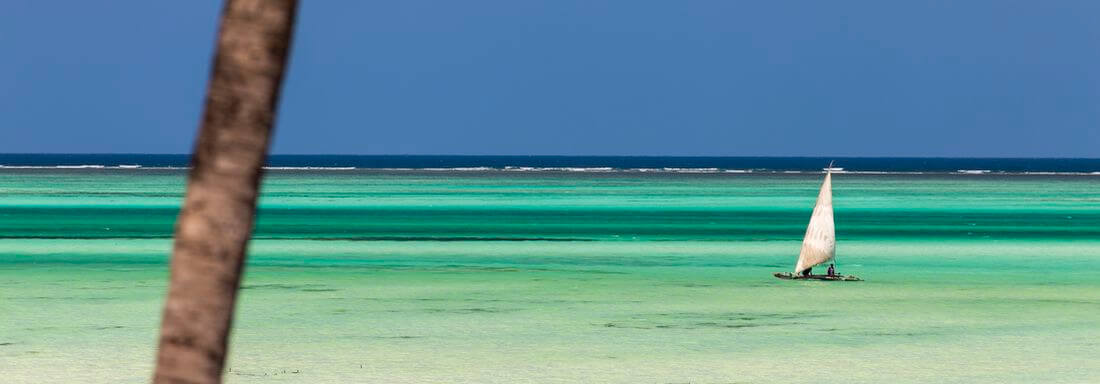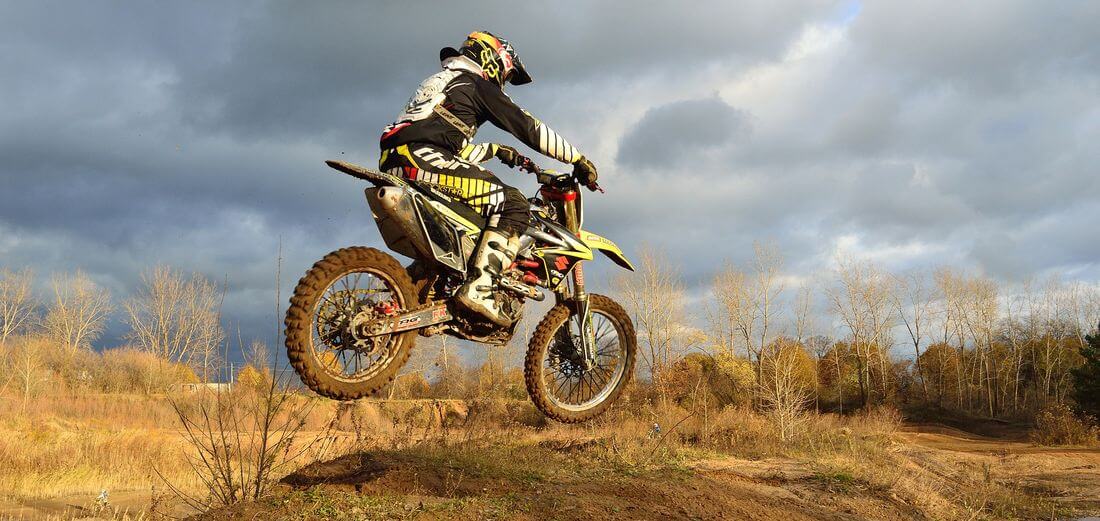Which camera setting to choose for each situation?
Last update: 04/19/2024
Our blog continues to grow thanks to you, our readers. This post may contain affiliate links, which means we can earn a small commission if you make a purchase through them, at no extra cost to you. This helps us to continue to bring you more and support our work!
This is a question often asked by people who are beginning in photography. Which camera setting to choose and when? Well, I’ll say it right away: it’s never “black or white”, understand that it would be too simple to tell you “for landscape photography, you always do this, for night photography, this, etc.”.
And I must admit that, when you start with basics of photography, you can feel totally lost in the choice of your camera settings. Quite often, a majority of people start by using the automatic mode of their DSLR, because they find it difficult to get out of their comfort zone. Nothing could be simpler than to put the automatic mode and to click, hoping the DSLR will do the rest to produce a beautiful picture.
Unfortunately, this is rarely the case and your camera will mostly decide for you things that you may not actually want. The purpose of this article is to guide you towards some kind of automatism that you will use depending on the situation you are in and what you want to shoot. Each scenario presented below is already (or will be) the subject of a dedicated article in order to go into more detail. They mention especially all the aspects of composition, difficulties, in short: good advices for each domain!
In this article, I’ll cover all the most common situations in photography, and I’ll offer you a small analysis to understand how to choose your camera settings and to where it is best to direct you. Of course, it won’t be that simple, but I hope I can still summarize it for you. In order to understand all the elements mentioned below, it will be necessary to master all the notions related to exposure in photography. It will also often be necessary to have a good knowledge of the semi-automatic modes.
In addition, for each situation described below, I suggest deepening your knowledge on the subject with one or two selections of books, but also by summarizing a few examples of photographic equipment adapted to the situation. Whether you have a compact, a mirrorless camera, or a DSLR, these settings should already allow you to improve yourself and take better pictures. Let’s get started!
To avoid repeating throughout the article almost similar points about the notions composing the exposure in photography, here is a very brief reminder of the three essential notions to be aware of. I let you refer to the three dedicated articles in the category of the basics of photography. Three points you have to know to master your camera:
The aperture of the diaphragm:
- It is the small number behind the “f/”.
- It is used to control the depth of field and to define the amount of light sent to the sensor,
- The larger the aperture, the smaller the number (f/1.4) and vice versa (you will get used to it),
- The smaller your aperture is (e.g., f/11), the less light you have coming to your sensor, which will require an increase in shutter speed and/or ISO sensitivity to maintain a good exposure.
ISO sensitivity:
- This is the sensitivity of your camera’s sensor to capture light,
- Usually starts at 100ISO (sometimes below, but very rare) and can go up to 25600ISO and more (can even reach one million but the image quality will be strongly deteriorated at these values),
- We use a low ISO (100 to 400) when there is enough light,
- When there is a lack of light, we increase the ISOs (800, 1600, 3200, etc.),
- By going up in ISO, you can reduce the exposure time or keep a smaller aperture,
- The increase in ISO generates digital noise (artifacts due to the amplification of the signal).
Shutter speed:
- This is the time your sensor will take to register the light it receives,
- Available from 1/8000 (or even less on some electronic shutter cameras) to several seconds, minutes or hours (if desired),
- You will have to be careful of motion blur and movement with low speed, unless it is a desired effect.
Static subjects (landscapes - architecture)
Generally speaking, these are subjects that are often associated with a wide and entirely sharp scene. Both domains focus mainly on giving greatness, whether it is a landscape in front of you, or a room or a building for architectural photography. Very often, this type of picture is shot with a wide viewing angle in order to give more depth to the image. We often use wide-angle or ultra-wide-angle (WA/UWA) lenses. In landscape photography, it is quite possible to capture landscapes with a long focal length, such as 200mm or 300mm. In this case, you will have to pay attention to your shutter speed. The example of using a long focal length is special. Indeed, the longer your focal length is, the faster you will have to use a fast shutter speed (and vice versa). It is often recommended to use at least 1x the shutter speed in relation to the focal length (1.5 times ideally, or even 2x depending on the size of your sensor).
In terms of camera settings, both types of photography are often made with a small aperture (between f/8 and f/16). You may occasionally be interested in highlighting the landscape or give an aesthetic effect to the scene by blurring part of the foreground or background. This is often the case for tree leaves, branches, or even an unsightly foreground. In this case, we may be able to use a large aperture (e.g., f/1.4) to blur these elements or to get closer to the foreground.


In the middle of the day, landscape and architectural photography will rarely be a problem regarding camera settings. We generally recommend ISO at the lowest setting (100 to 200), and a small aperture (f/8 – f/16). I personally advise to shoot landscapes in Av (Canon) or A (Nikon) mode. You just have to select the lowest ISO (or even leave the ISO in auto), your (small) aperture, and the camera calculates automatically the shutter speed. If you use a wide angle, there will be no problem with the shutter speed. If you use a telephoto lens (ex: 200mm), it may happen that in overcast weather, your shutter speed displayed by the camera could be borderline.
Things will get complicated in these types of photography in 3 situations:
- If the light decreases or during sunrises and sunsets
- If you use a long focal length
- If you shoot night pictures
In the 3 cases mentioned above, the problem will remain the same: you will lack light and you will quickly risk blurred movement. To compensate for this loss of brightness, you can therefore:
- Increase the ISO (from ISO 100 to 200 or even 800 for large sensors),
- Open the diaphragm (change from f/11 to f/8 or f/5.6 for small sensors),
- Use a tripod or place the camera on a stable surface.
To sum it up simply, as soon as the light conditions become more difficult (sunrise/sunset and night), you will have to adapt your camera settings, either by increasing the ISO (beware of the risk of noise) or by opening your diaphragm (less depth of field, your photo will be less sharp everywhere).
To address this necessary adaptation, you can choose the 3rd option and use a tripod to keep the desired settings for your scene. This is why you see many landscape photographers at sunset/sunrise with their tripods: they want to keep their ideal settings. Want to learn more about landscape photography?
Summary: Static subjects
Settings
- ISO: at the lowest (100 or 200)
- Mode: Av / A
- Shutter speed: 1/20 and shorter (depending on conditions), what you want on tripods
- Aperture: small (f/8 to f/16)
- Focal length: generally short (wide angle and ultra-wide angle)

Example of a wide-angle lens for DSLR Canon APS-C body, perfect for landscape photography – More details on Amazon
Recommended camera equipment for landscape/architectural photography
- Standard camera body in the middle of the day
- Lenses: Wide angle and Ultra-Wide angle.
Regarding lenses for this type of pictures, you can find them at all prices and from all brands. I suggest you a summary table of wide-angle and ultra-wide-angle lenses I recommend. For information, the table can be sorted, just click on the desired column.
| Brand | Model | Mount | Best Price |
|---|---|---|---|
| Canon | 10-22mm f/3.5-4.5 | APS-C | Amazon |
| Canon | 10-18mm f/4.5-5.6 | APS-C | Amazon |
| Canon | 16-35mm f/4L IS | Full Frame | Amazon |
| Canon | 16-35mm f/2.8L III | Full Frame | Amazon |
| Canon | 17-40mm f/4L | Full Frame | Amazon |
| Nikon | 12-24mm f/4 | APS-C | Amazon |
| Nikon | 10-24mm f/3.5-4.5 | APS-C | Amazon |
| Nikon | 10-20mm f/4.5-5.6 | APS-C | Amazon |
| Nikon | 16-35mm f/4 | Full Frame | Amazon |
| Nikon | 14-24mm f/2.8 | Full Frame | Amazon |
| Nikon | 18-35mm f/3.5-4.5 | Full Frame | Amazon |
| Tamron | 17-35mm f/2.8-4 | Full Frame | Amazon |
| Tamron | 15-30mm f/2.8 G1 | Full Frame | Amazon |
| Tamron | 15-30mm f/2.8 G2 | Full Frame | Amazon |
| Tamron | 10-24mm f/3.5-4.5 | APS-C | Amazon |
| Sigma | 10-20mm f/3.5 | APS-C | Amazon |
| Sigma | 12-24mm f/4 | Full Frame | Amazon |
| Tokina | 16-28mm f/2.8 | Full Frame | Amazon |
| Tokina | 11-20mm f/2.8 | APS-C | Amazon |
| Tokina | 11-16mm f/2.8 | Full Frame | Amazon |
- Tripod: Only for low light/sunset/night or daytime spinning with ND filters. A very good selection here to adapt to the weight of your equipment. You can have a look at my dedicated article in the category “everything for photography”.
- Filters:
- Use for long exposure. Consider an ND400 or ND1000 in the middle of the day. At the end of the day, an ND64 is perfect in my opinion to avoid too long exposures.
- Polarizing filter: Essential for contrast and saturation. My preference (at Hoya).
- GND filters + Filter holder: Perfect to balance the brightness of a scene when shooting. For sunset/sunrise, I recommend a GND 16 or 32 filter (Hard or Soft to choose according to your scene). Don’t forget also a Reverse filter adapted for sunsets/sunrises.
Books
- The Landscape Photography Book: The step-by-step techniques you need to capture breathtaking landscape photos like the pros
- Mastering Long Exposure: The Definitive Guide for Photographers
- Photography: Night Sky: A Field Guide for Shooting after Dark
Moving subjects (portraits, wildlife, sports)
Second category of subjects: the moving ones. As for the static subjects, I have gathered a lot of domains whose settings are quite similar. Portraits are a bit apart because they are certainly moving subjects but much slower than wildlife, cars or planes…
In a majority of cases for this type of moving subjects, you will be advised to use the S mode (or Tv at Canon), meaning shutter speed priority. I advise you to set the desired speed (say 1/1000th for example), to set the ISOs to automatic, and in most cases, the camera settings will be at full aperture (the smallest “f/” possible), which will suit you since you want to isolate the subject from its background.
In the case of wildlife that doesn’t move a lot, I often use the Av / A mode (aperture priority), which allows me to set the aperture (as large as possible generally), set the ISOs to auto and check what shutter speed the camera gives me. If the animal doesn’t move, even with a long focal length, this should be enough. If you think it isn’t, you can always switch the ISOs to manual mode and adjust the ISOs by doubling them to gain another notch in speed.



Generally speaking, for these types of subjects (people, animals, sports), the main purpose is to freeze the subject as best as possible and isolate it from the background (especially in portraits). Regarding camera settings, here is what you should remember:
- We will often use a large aperture (ex: f/1.4 to f/2.8) which will reduce the exposure time and the depth of field of the scene. This will give you a sharp subject and a blurred background. Be careful in portrait or close animals’ photography not to open your diaphragm too much or you may see a difference in sharpness between the eyes and the rest of the head (unless desired). For distant subjects (sports, animals at a distance), this will not be a problem. If you are indoors (Ex: Handball, volleyball, etc.), the lack of light will lead you to shoot at full aperture (maximum aperture of your lens) and often to increase your ISO. Obviously, at night, you will have no choice but to also open your aperture to the maximum (to gain shutter speed).
- Regarding ISO, everything will depend on your subject and the light of the scene. In portrait photography, the subject will often move less (so less need to increase ISO). For other subjects (sports, wildlife, etc.), since it often moves very quickly, your camera will have to capture the scene promptly and, for this reason, an increase in ISO will often be necessary, to a lesser extent in broad daylight, but especially in low light (indoors, for example). In addition to using a large aperture, this will be an obligation or almost. Very often, ISO 400 to 800 will be your daily routine, even 1600/3200 as soon as the lack of light is felt and you have opened your diaphragm to the maximum. Would you like to learn more about night photography by the way?
- Regarding focal length, telephoto lenses are often used, between 70mm and 200mm in Full Frame and between 50 and 150mm in APS-C for portrait. The long focal length also allows you to isolate the background more easily, allowing your subject to stand out. For environmental portrait or group pictures, you can use shorter focal lengths, between 28 and 50mm in FF or between 24 and 35mm in APS-C. In wildlife and sports, focal lengths of 300mm, 400mm or even more are quite common. A particular attention will have to be done for the use of long focal lengths. Remember to always keep a sufficient shutter speed according to your focal length (1x to 2x the focal length) – if your lens is stabilized, which is often the case with such long focal lengths, you will have more flexibility as long as the subject is relatively slow.
Summary: moving subjects
Settings:
- ISO: Increase ISO as needed (portrait), often necessary in sport/wildlife (ISO 400/800 and higher indoors and in low light)
- Mode: Av (static subjects), Tv (fast subjects) or M mode
- Shutter speed: 1/90th and less depending on the subject (portrait), and to be adapted to your subject in sports and wildlife (1/300 to 1/500, even more depending on the subject)
- Aperture: large (e.g., f/1.2 to f/2.8)
- Focal length: long (telephoto lens)

The Tamron 100-400mm, a beautiful lens perfect for wildlife without breaking the bank! – More details on Amazon
Camera equipment for moving subjects
- Body: entry-level/mid-range (portrait) and high-end with good AF (wildlife/sport)
- Portrait lens: once again, there will be something for everyone. We have summarized all our recommendations in a sortable summary table below.
| Brand | Model | Mount | Best Price |
|---|---|---|---|
| Canon | 50mm f/1.8 | Full Frame | Amazon |
| Canon | 50mm f/1.4 | Full Frame | Amazon |
| Canon | 85mm f/1.8 | Full Frame | Amazon |
| Canon | 85mm f/1.4 | Full Frame | Amazon |
| Canon | 100mm f/2.8L | Full Frame | Amazon |
| Canon | 70-200mm f/2.8L III IS | Full Frame | Amazon |
| Canon | 70-200mm f/4L II IS | Full Frame | Amazon |
| Canon | 135mm f/2L | Full Frame | Amazon |
| Nikon | 50mm f/1.8 | Full Frame | Amazon |
| Nikon | 50mm f/1.4 | Full Frame | Amazon |
| Nikon | 105mm f/1.4 | Full Frame | Amazon |
| Nikon | 85mm f/1.8 | Full Frame | Amazon |
| Nikon | 85mm f/1.4 | Full Frame | Amazon |
| Sigma | 85mm f/1.4 | Full Frame | Amazon |
| Sigma | 135mm f/1.8 | Full Frame | Amazon |
| Sigma | 105mm f/1.4 art | Full Frame | Amazon |
| Tamron | 85mm f/1.8 VC | Full Frame | Amazon |
| Samyang | 85mm f/1.4 AF | Full Frame | Amazon |
- Lens for wildlife/sport: There are plenty of them at almost any price. Once again, here are some solid references.
| Brand | Model | Mount | Best Price |
|---|---|---|---|
| Sigma | 100-400mm f/5-6.3 | Full Frame | Amazon |
| Sigma | 150-600mm f/5-6.3 | Full Frame | Amazon |
| Tamron | 100-400mm f/5-6.3 | Full Frame | Amazon |
| Tamron | 150-600mm f/5-6.3 G2 | Full Frame | Amazon |
| Canon | 100-400mm f/4.5-5.6L II IS | Full Frame | Amazon |
| Canon | 70-300mm f/4-5.6 L | Full Frame | Amazon |
| Canon | 300mm f/4 L IS USM | Full Frame | Amazon |
| Canon | 400mm f/5.6 L USM | Full Frame | Amazon |
| Canon | 55-250mm f/4-5.6 IS | APS-C | Amazon |
| Nikon | 200-500mm f/5.6 | Full Frame | Amazon |
| Nikon | 300mm f/4.0 | Full Frame | Amazon |
| Nikon | 70-300mm f/4.5-6.3 | APS-C | Amazon |
Books
- Wildlife Photography: An expert guide
Waterfall photography
As it happens, it’s a domain that I practice quite a lot, especially when traveling, and for which I’m a bit passionate! I also wrote a full article about waterfall pictures, so don’t hesitate if you want to know more about it – especially for practical tips.
Regarding settings for this type of picture, generally speaking, you’ll have to use:
- A short focal length, wide-angle type (but not only),
- A small aperture (e.g., f/11),
- ISOs at their lowest.
The idea behind this is to get the maximum possible depth of field from the cascade and to give an impression of vastness with a wide-angle lens. ISOs are always kept low in order to limit the appearance of digital noise. In some desired cases, a large aperture could be used to blur some elements of the image in the foreground (foliage for example), but this will be very rare in my opinion.
Indeed, very often for this type of picture, it is recommended to try to slow down the exposure time to give a moving effect to the waterfalls. So, this is the opportunity to learn the long exposure. You have probably already seen these pictures of waterfalls or seascapes with milky effects, as in movement. This is simply due to a much slower exposure time than normal.

It all depends on the time of the day you want to capture the waterfall. In the middle of the day, if you want to achieve this motion effect, it will be impossible without a neutral density (ND) filter. As soon as the light will fade (sunrise/sunset/undergrowth), you will be able to start doing long exposures without an ND filter. Afterwards, everything will be determined by the nuance of the exposure time and the effect you want to achieve. At night, of course, no filter is needed anymore. The only downside is that you need a tripod in order to shoot long exposures.
About shutter speed, you’ll get motion effects below 1/10s for example, and more and more pronounced effects as soon as you get 1s of exposure. For fully milky effects, you’ll have to choose for example 10 to 30 sec. exposures.
I was telling you about the focal length, and it’s true that we will use a short focal length in most cases. But it is interesting to be flexible with a standard 18-55mm lens on APS-C or 24-70mm on full frame. Of course, and I suggest it, you can always move and rotate around the waterfall to find the best angle, but it’s sometimes tricky and having the possibility to zoom in will make it easier for you.
Summary: Waterfall photography
Settings
- ISO: at the lowest
- Mode: Av or M
- Speed: 1/10 to several seconds (depending on the desired more or less pronounced effect)
- Aperture: small (f/8 to f/16)
- Focal length: short (wide-angle and ultra-wide-angle) – Standard zoom (for more flexibility)
Equipment for waterfall photography
- Body: An entry-level body will do the job very well.
- Lenses: see the list for Landscape photography
- Tripod: mandatory -> Your choice will have to be adapted according to the weight of your camera equipment. The ideal is to leave some latitude. If your camera body + lens weighs 2kg, I advise you to go on a tripod that would support 4kg (2x the load).
That’s it, I’m coming to the end of this long article which explains the camera settings you’ll have to use in different situations on the ground. Nothing is set in stone and nothing will ever be so simple in itself. You have to keep in mind that these are recommendations, decision aids to help you choose your settings. Of course, you will adapt everything according to your photographic equipment, which will often depend on your budget. I deliberately did not talk about the settings for macro photography, which is a very particular field. I will deal with this point in a specific article. I hope I have been clear enough and that some points are starting to make sense in your mind! If you wish to go further, I invite you to read the tips and photo techniques I talk about on the blog.
In the meantime, I wish you a good photo apprenticeship!
See you soon,

Written by Sylvain PONS
I've been passionate about photography since 2010, learning as I went along. Today, I dedicate myself to guiding others in their choice of camera gear and sharing a variety of tips to improve their photography skills.
Despite our care, a mistake may have slipped into this article. If you find any, please don't hesitate to let us know so we can correct it as soon as possible and keep our information up-to-date!












